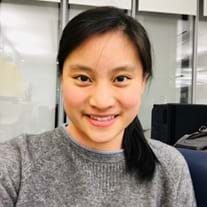In response to the urgent need to incorporate ethical and humanistic principles into the development and application of artificial intelligence (AI), the New York Academy of Sciences offers a new AI and Society post-doctoral fellowship program, in partnership with Arizona State University’s School for the Future of Innovation in Society.
Merging technical AI research with perspectives from the social sciences and humanities, the goal of the program is the development of multidisciplinary scholars more holistically prepared to inform the future use of AI in society for the benefit of humankind.
Promising young researchers from disciplines spanning computer science, the social sciences, and the humanities will be recruited to participate in a curated research program. Fellows’ time will be divided between New York City, Arizona State University, and on-site internships, working alongside seasoned researchers who are well-versed in academia, industry, or policy work.
To qualify, candidates must have a PhD in a relevant field such as computer science, artificial intelligence, psychology, philosophy, sociology, ethics, law (JD), or a related field. Strong research background and expertise in the field of AI and Society, including publications in leading academic journals, is recommended.


Applications are now closed.
2023 Fellows

Akuadasuo Ezenyilimba, PhD
2023 Fellow
Akuadasuo Ezenyilimba is a recent Human Systems Engineering PhD graduate. Her academic background consists of a Bachelor’s in Psychology, Master’s in Applied Psychology, and a Master’s in Human Systems Engineering, Her research interest include human computer interaction, traumatic brain injury (TBI), and TBI rehabilitation. She is looking forward to beginning her post doctoral work focused on Artificial Intelligence in Society with Arizona State University and the New York Academy of Sciences.

Nitin Verma, PhD
2023 Fellow
Nitin is an incoming Postdoctoral Research Scholar at Arizona State University’s School for the Future of Innovation in Society in collaboration with the New York Academy of Sciences. His doctoral dissertation research at the School of Information at The University of Texas at Austin investigated the notion of public trust in video with the emergence of deepfake and allied generative-AI technologies. Nitin’s broader research interests include the interrelationship between society (individuals, platforms, governments, and other stakeholders) and AI, the role of the photographic record in shaping history, and in the deep connection between human curiosity and the continuing evolution of the scientific method.

Marjorie Xie, PhD
2023 Fellow
Dr. Marjorie Xie serves as an AI & Society fellow at the New York Academy of Sciences, joint with Arizona State University’s School for the Future of Innovation in Society. Marjorie’s work combines AI, mental health, and education. Her goals are: 1) Develop technology to enable social-emotional learning and to facilitate collaborative interpersonal relationships; 2) Develop systems for effective AI governance. As an AI researcher, engineer, and social entrepreneur, she hopes to collaborate with mental health professionals, educators, business leaders, and social media experts.
Prior to serving as a fellow, Marjorie interned at Basis Research Institute, building AI tools for reasoning about collaborative intelligence in animals. Marjorie completed her Ph.D. in Neurobiology & Behavior at Columbia University, where she used AI tools to build interpretable models of neural systems in the brain. Before her PhD, she designed and completed an independent major in computational neuroscience at Princeton University, where she also pursued intensive studies in philosophy, literature, and history. Born in France and raised in Seattle, Washington by Chinese immigrants, she currently lives and serves as a resident fellow at the International House in New York City.

